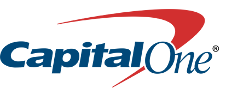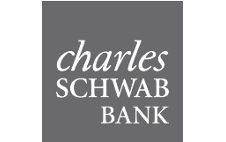How (and why) to open a Roth IRA
Opening a Roth IRA is easy: You’ll need to provide some personal information, including your birthdate and Social Security number, but that’s about it.
With a Roth, you can withdraw your contributions at any time without paying taxes or penalties. In that way, Roths can act as a backup emergency savings account. Plus, once you’re retired, there are no required minimum distributions, as there are with traditional IRAs. One thing to know: There are income limits for funding a Roth IRA — see the FAQs below.
Even if you have a 401(k) or another workplace plan, it can make sense to save in a Roth IRA — as long as you also make sure to get any company 401(k) match you may be offered — because a Roth IRA account often offers more investment choices. This is important because your investment returns will have a big impact on your savings over time.
Say you put $500 every month into a Roth IRA (which would total the annual maximum of $6,000). If you earn an annual average return of 8%, that gets you about $475,000 after 25 years. Even if you earn a more conservative 6%, you would end up with over $345,000 after 25 years.
Need more help with this process? See our guide on Roth IRAs.
Choose your investment style
Pick the investor type that describes you so we can point you toward the best provider for your situation:
- I’m a “do-it-yourself” investor. You can open a Roth IRA at an online broker, then choose your own investments (this may be simpler than you think — you can build a diversified portfolio with just three or four mutual funds). With the providers detailed below, you generally won’t pay an account fee (though that may require your agreeing to electronic document delivery or maintaining a minimum account balance), so the primary costs you need to watch for are trading commissions and investment fees, which are also called expense ratios
- I’m a “manage it for me” investor. If you would rather have someone pick an investment portfolio for you, you can open your Roth IRA at a robo-advisor. Robo-advisors are online investment services that build and maintain a diversified portfolio for you. You pay a small fee for the service, but the fees tend to be substantially lower than for a human financial advisor — typically 0.25% to 0.50% of the assets under management annually. These services are growing rapidly: One of our top robo-advisor picks, Wealthfront, has over $11 billion in assets under management.
Roth IRA FAQs
What is the best bank for a Roth IRA?
As you can see, our roundup of the best Roth IRAs focuses on accounts offered by brokers and robo-advisors — not banks. Generally, a broker or robo-advisor is a better option than a bank for a Roth IRA account. That’s because, for a long-term goal like retirement, you want to harness the power of the stock market to help your account get bigger.
Bank Roth IRAs generally offer access to savings products, such as certificates of deposit. CDs are savings vehicles that guarantee a rate of return as long as you leave your money in for a specific period of time. Historically, stock market returns average about 10% a year. CDs are currently offering about 3%.
Of course, those higher stock market returns come with the risk that, in any given year, your account may lose value. But investors who leave their money in the market, even through those down days, enjoy hefty average gains over time.
If, despite the much lower rate of return, you decide to go with a bank for your Roth IRA account, be sure to pick among the accounts with the best IRA CD rates so you know you’re getting the best possible rate of return for that type of account.
Is it a good idea to invest in a Roth IRA?
The short answer? Yes, it’s almost always a good idea to invest in a Roth IRA account.
Roth IRAs offer a sweet tax benefit for retirement savers. Plus, you can withdraw your contributions at any time, without penalty, which means a Roth can act as a backup emergency fund.
Keep in mind that Roth IRAs don’t offer an immediate tax break. Your investment earnings grow tax-free in the Roth IRA account, and you never pay taxes on those earnings, assuming you follow the withdrawal rules.
Now, if your tax rate is the same when you contribute to the account as it is later, when you withdraw the money, then a Roth IRA and a traditional IRA offer essentially the same benefit. The only difference is the timing of your tax bill — with a traditional IRA you pay your tax bill later and with a Roth you pay your tax bill upfront.
But many people find that their tax rate changes over time. If your tax rate is likely to be higher in the future — that’s often the case for young adults who are just starting out in their careers — then a Roth makes sense, because you pay the income tax on your contributions now, when your tax rate is lower.
Of course, it can be really hard to know what your future tax rate will be, especially if retirement is decades away, so it can make sense to contribute both to a 401(k) or traditional IRA, and to a Roth IRA, if you qualify.
No matter what, if you have a 401(k) or other workplace retirement plan, contribute enough to get the match — that’s free money you don’t want to pass up.
How much do Roth IRAs earn?
How much you earn in a Roth IRA account will vary, depending on what you’re investing in. The average annual stock market return historically has been about 10%.
Of course, you want to invest in a diversified portfolio of both stocks and bonds, so that your account has a buffer from the stock market’s inevitable ups and downs. Generally, creating a diversified investment portfolio means investing in a handful of mutual funds or exchange-traded funds, which, in turn, invest in a broad swath of stocks and bonds.
A diversified investment portfolio will inevitably earn less than the stock market’s return, because bond yields tend to be in the single digits. Still, a diversified portfolio of stocks and bonds generally earns more than any bank savings product, such as a savings account or CD.
Do I qualify for a Roth?
The Roth IRA has income rules for contributions. For 2019, the amount you can contribute begins to phase down at $122,000 in annual income for single filers and $193,000 for those married filing jointly. (For 2018, phase downs begin at $120,000 and $189,000.) The contribution limit is slowly reduced until your ability to contribute is eliminated completely. If your income is above these amounts, our Roth IRA calculator tells you your contribution limit.
With a traditional IRA and a Roth IRA, the contribution limit is a shared limit — you can contribute a total of up to $6,000 per year ($7,000 if age 50 or older), and it’s up to you to decide how you want to divvy that up between the two.
How easily can I access money in my Roth IRA?
With a Roth IRA, you can pull your contributions out at any time — remember, you’ve already paid taxes on that money.
However, if you withdraw your investment earnings, you may owe income tax and/or a 10% penalty, depending on how old you are and how long you’ve owned the account. But there are quite a few situations where an early withdrawal of investment earnings is exempt from penalties and income tax. We detail those exceptions here.
How much can I contribute to a Roth?
In 2019, you can contribute up to $6,000 a year, or $7,000 if you’re 50 or older, unless your contribution is reduced by the income rules noted above. The contribution limit applies only to new contributions to the account, not rollovers.
Can I contribute to a Roth IRA if I already have a 401(k) or a traditional IRA?
Yes. You can have both a Roth IRA and a 401(k) and contribute the maximum you’re allowed to each.
Traditional IRAs don’t have income limits, but if you’re also covered by a workplace retirement plan like a 401(k), the amount of your contribution that you can deduct may be phased down or eliminated.
That means you can still make the maximum annual contribution, but a portion or all of it will be considered a nondeductible contribution. There’s no immediate tax benefit on nondeductible contributions, but you're still able to defer taxes on investment income until retirement. Read more about the traditional IRA deduction limits.
How do I open a Roth IRA?
The process is easy as can be: You can open a Roth IRA at any online broker or robo-advisor, typically online in about 15 minutes. You’ll need to provide some personal information like your name, address, birthday, Social Security number and means of funding the account, so have that handy. Here’s our step-by-step guide to opening a Roth IRA, including details about how to fund and invest the account.
How will my Roth IRA grow?
Unlike savings accounts, Roth IRAs don’t pay a set interest rate or return. Once you’ve put money into the account, you need to select investments; otherwise, your money will sit in cash, which isn’t ideal for a long-term goal like retirement. Most Roth IRA providers offer a wide range of investment options, including individual stocks, bonds and mutual funds.
If that sounds out of your league, you can open your Roth IRA at a robo-advisor — like the two mentioned above — which will manage your investments for you for a small fee.




